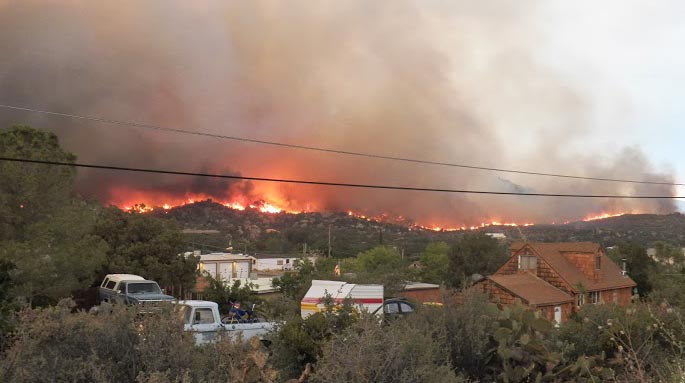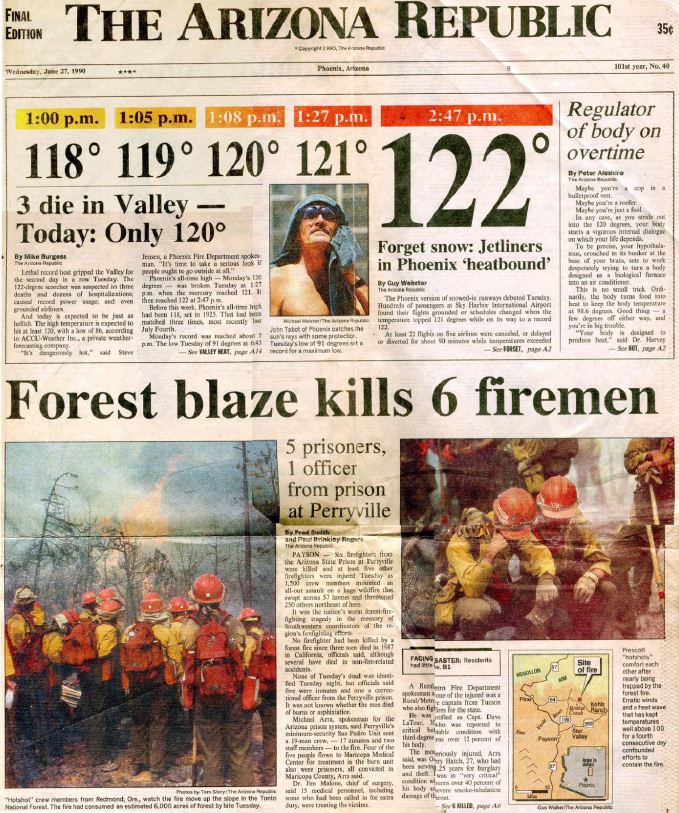
It is enough of a tragedy that 19 members of the Granite Mountain Hotshots died while fighting the Yarnell Hill Fire on June 30. But several issues continue to pour salt into the wounds of the grieving families and others that mourn their deaths. Some issues will hopefully diminish when the two reports become public. Or, in a worse case, they could be made worse, or new ones could be unearthed.
The Serious Accident Investigation which was commissioned by the Arizona State Forestry Division is expected to be public within the next week or so, but only after it is distributed first to the families of the 19 victims.
The Arizona Division of Occupational Safety and Health, a state version of federal OSHA, is also working on a report. It is required to be complete no later than six months after their investigation was announced, which would make it due around the first part of 2014.
The controversy about the the large differences in the survivor benefits for the families of the full time and seasonal firefighters on the Granite Mountain Hotshots has been festering for weeks and is now being discussed in the Arizona legislature.
Another issue that came to light recently is the refusal of the Yavapai County Sheriff’s and Medical Examiner’s offices to release the autopsy reports for the 19 firefighters. This has escalated to the point where the Arizona Republic and 12 News have filed suit against the agencies. The Arizona Republic and 12 News realize that certain photographs of the bodies and perhaps other evidence may not be appropriate to be released, but they are adamant that the remaining records should be released and feel their demands are backed by state law.
Still another issue that will be debated was published by the Arizona Republic and picked up by the USA Today. It relates to the reports prepared by the Serious Accident Investigation team. The latest Serious Accident Investigation Guide, revised August, 2013, recommends that two reports be prepared. One, the Factual Report, would be made public, and the other, the Management Evaluation Report, would be kept confidential, intended for internal agency use only. The public report would not include any conclusions or recommendations. This would result in a public report that is much different from many of the reports we have seen in recent years.
UPDATE: we wrote more about these changes to the Serious Accident Investigation reports.







